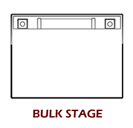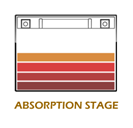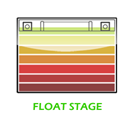TEC signs Agreement with TKB Ind. to develop TEG SMART Battery Charging Controller.
After many years of profiling the characteristics of thermoelectric modules in series and parallel configurations we have signed a development agreement with TKB Industrial, which is an Electronic Products Development Company. TKB will be co-partnering with our in house engineering staff to develop a Maximum Power Point Tracking Charge SMART controller for a 12/24V battery system. The charge controller will be designed to work with maximum power values of 50 to 250 watts systems and will be scalable to offer the best possible efficiency conversions in those power ranges.
Features Include:
– Three phases of charging. Bulk, Absorption, and Float
– Smart charging will be controlled by temperature SMART feedback compensation
– Buck as well as Boost conversion (Unlike solar that only Bucks)
– Automatic battery detection for different battery chemistries for correct charging rates
– SMART Chargers will be specifically suited to maximum power for maximum efficiency.
– 50, 100, 150, 200, 250 watt designs
– Microprocessor algorithm specifically written for TEG module characteristics (NOT SOLAR)
– Unique dynamic switching ™capability (Patent Pending)
– ADAPTABLE FOR 4 OR 6 ARRAY MODULE SETS.
– WIFI Communications uplink options.
– Load based controller option
– Secondary output for load dedicated motors (Pumps or Fans)
You may have heard it said “you need a 3 stage charger”. We’ve said it, and we’ll say it again. The best kind of charger to use on your battery is a 3 stage charger. They are also called “smart chargers” or “micro processor controlled chargers”. Basically, these types of chargers are safe, easy to use, and will not overcharge your battery.
Okay, so it’s hard to deny that 3 stage chargers work and they work well. But here’s the million dollar question: What are the 3 stages? What makes these chargers so different and efficient? Is it really worth it? Let’s find out by going through each stage, one by one.
Stage 1 | Bulk ChargeThe primary purpose of a battery charger is to recharge a battery. This first stage is typically where the highest voltage and amperage the charger is rated for will actually be used. The level of charge that can be applied without overheating the battery is known as the battery’s natural absorption rate. For a typical 12 volt battery, the charging voltage going into a battery will reach 14.6-14.8 volts, while flooded batteries can be even higher. For the gel battery, the voltage should be no more than 14.2-14.3 volts. This stage will recharge batteries that are severely drained. There is no risk of overcharging in this stage because the battery hasn’t even reached full yet.
Stage 2 | Absorption Charge
Smart chargers will detect voltage and resistance from the battery prior to charging. After reading the battery the charger determines which stage to properly charge at. Once the battery has reached 80%* state of charge, the charger will enter the absorption stage. At this point most chargers will maintain a steady voltage, while the amperage declines. The lower current going into the battery safely brings up the charge on the battery without overheating it.
This stage takes more time. For instance, the last remaining 20% of the battery takes much longer when compared to the first 20% during the bulk stage. The current continuously declines until the battery almost reaches full capacity.
*Actual state of charge Absorption Stage will enter will vary from charger to charger
Stage 3 | Float Charge
Some chargers enter float mode as early as 85% state of charge but others begin closer to 95%. Either way, the float stage brings the battery all the way through and maintains the 100% state of charge. The voltage will taper down and maintain at a steady 13.2-13.4 volts, which is the maximum voltage a 12 volt battery can hold. The current will also decrease to a point where it’s considered a trickle. That’s where the term “trickle charger” comes from. It’s essentially the float stage where there is charge going into the battery at all times, but only at a safe rate to ensure a full state of charge and nothing more. Most smart chargers do not turn off at this point, yet it is completely safe to leave a battery in float mode for months to even years at a time.
It’s the healthiest thing for a battery to be at 100% state of charge.
The best kind of charger to use on a battery is a 3 stage smart charger. They are easy to use and worry free. You don’t ever have to worry about leaving the charger on the battery for too long. In fact, it’s best if you DO leave it on. When a battery is not at a fully charged state, sulfate crystal build on the plates and this robs you of power.



